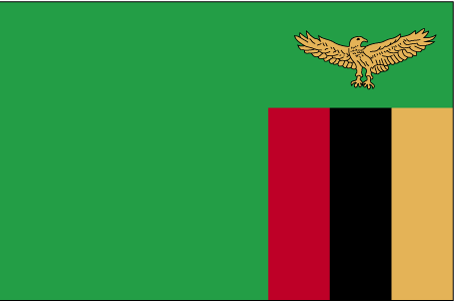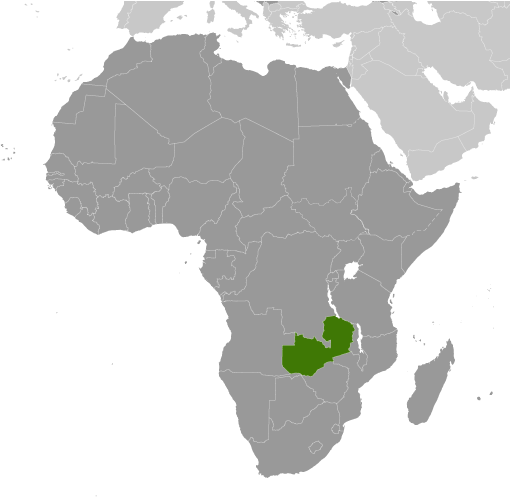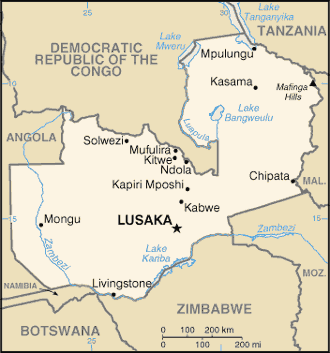
|
|
Advertisements:
People And SocietyNationality
Noun Zambian(s)
Adjective Zambian Ethnic groups
African 99.5% (includes Bemba, Tonga, Chewa, Lozi, Nsenga, Tumbuka, Ngoni, Lala, Kaonde, Lunda, and other African groups), other 0.5% (includes Europeans, Asians, and Americans) (2000 Census) Languages
Bemba (official) 30.1%, Nyanja (official) 10.7%, Tonga (official) 10.6%, Lozi (official) 5.7%, Chewa 4.9%, Nsenga 3.4%, Tumbuka 2.5%, Lunda (official) 2.2%, Kaonde (official) 2%, Lala 2%, Luvale (official) 1.7%, English (official) 1.7%, other 22.5% (2000 Census) Religions
Christian 50%-75%, Muslim and Hindu 24%-49%, indigenous beliefs 1% Population World Ranking: 70
13,817,479 (July 2012 est.)
Note Estimates for this country explicitly take into account the effects of excess mortality due to AIDS; this can result in lower life expectancy, higher infant mortality, higher death rates, lower population growth rates, and changes in the distribution of population by age and sex than would otherwise be expected Age structure
0-14 years
46.7% (male 3,253,125/female 3,228,844) 15-64 years 50.8% (male 3,544,640/female 3,508,344) 65 years and over 2.5% (male 148,531/female 197,852) (2011 est.) Median age
Total 16.5 years
Male 16.5 years Female 16.6 years (2012 est.) Population growth rate World Ranking: 11
3.034% (2012 est.)
Birth rate World Ranking: 4
43.51 births/1,000 population (2012 est.) Death rate World Ranking: 26
12.42 deaths/1,000 population (July 2012 est.) Net migration rate World Ranking: 146
-0.76 migrant(s)/1,000 population (2012 est.) Urbanization
Urban population 36% of total population (2010)
Rate of urbanization 3.2% annual rate of change (2010-15 est.) Major cities - population
LUSAKA (capital) 1.413 million (2009) Sex ratio
At birth 1.03 male(s)/female
Under 15 years 1.01 male(s)/female 15-64 years 1.01 male(s)/female 65 years and over 0.74 male(s)/female Total population 1 male(s)/female (2011 est.) Maternal mortality rate World Ranking: 25
440 deaths/100,000 live births (2010) Infant mortality rate World Ranking: 23
Total 64.61 deaths/1,000 live births
Male 69.26 deaths/1,000 live births Female 59.82 deaths/1,000 live births (2012 est.) Life expectancy at birth World Ranking: 207
Total population 52.57 years
Male 51.35 years Female 53.83 years (2012 est.) Total fertility rate World Ranking: 7
5.85 children born/woman (2012 est.) Health expenditures World Ranking: 141
4.8% of GDP (2009)
Physicians density
0.055 physicians/1,000 population (2006) Hospital bed density
1.9 beds/1,000 population (2008) Hiv/aids - adult prevalence rate World Ranking: 6
13.5% (2009 est.)
Hiv/aids - people living with hiv/aids World Ranking: 11
980,000 (2009 est.)
Hiv/aids - deaths World Ranking: 10
45,000 (2009 est.)
Major infectious diseases
Degree of risk Very high
Food or waterborne diseases Bacterial and protozoal diarrhea, hepatitis A, and typhoid fever Vectorborne diseases Malaria and plague are high risks in some locations Water contact disease SchistosomiasisAnimal contact disease Rabies (2009) Children under the age of 5 years underweight World Ranking: 55
14.9% (2007)
Education expenditures World Ranking: 160
1.3% of GDP (2008)
Literacy
Definition
Age 15 and over can read and write English Total population 80.6%Male 86.8% Female 74.8% (2003 est.) School life expectancy (primary to tertiary education)
Total 7 years
Male 8 years Female 7 years (2000)
Comments
Add a new comment: |
Advertisement
Members area
Zambia (Lusaka):
 
GPS points from Zambia (Lusaka)
|
||||||||

 The territory of Northern Rhodesia was administered by the [British] South Africa Company from 1891 until it was taken over by the UK in 1923. During the 1920s and 1930s, advances in mining spurred development and immigration. The name was changed to Zambia upon independence in 1964. In the 1980s and 1990s, declining copper prices, economic mismanagement and a prolonged drought hurt the economy. Elections in 1991 brought an end to one-party rule, but the subsequent vote in 1996 saw blatant harassment of opposition parties. The election in 2001 was marked by administrative problems with three parties filing a legal petition challenging the election of ruling party candidate Levy MWANAWASA. MWANAWASA was reelected in 2006 in an election that was deemed free and fair. Upon his abrupt death in August 2008, he was succeeded by his Vice President Rupiah BANDA, who subsequently won a special presidential by-election in October 2008. Michael SATA was elected President in September 2011.
The territory of Northern Rhodesia was administered by the [British] South Africa Company from 1891 until it was taken over by the UK in 1923. During the 1920s and 1930s, advances in mining spurred development and immigration. The name was changed to Zambia upon independence in 1964. In the 1980s and 1990s, declining copper prices, economic mismanagement and a prolonged drought hurt the economy. Elections in 1991 brought an end to one-party rule, but the subsequent vote in 1996 saw blatant harassment of opposition parties. The election in 2001 was marked by administrative problems with three parties filing a legal petition challenging the election of ruling party candidate Levy MWANAWASA. MWANAWASA was reelected in 2006 in an election that was deemed free and fair. Upon his abrupt death in August 2008, he was succeeded by his Vice President Rupiah BANDA, who subsequently won a special presidential by-election in October 2008. Michael SATA was elected President in September 2011.